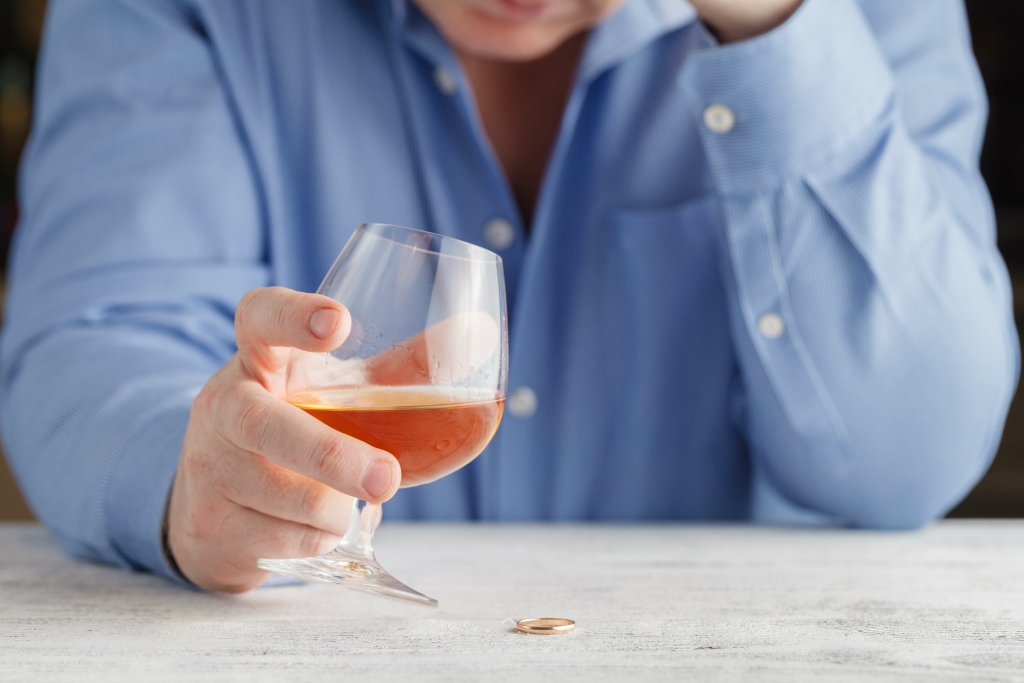However, it is feasible only in relatively stable patients and requires periodic monitoring of the withdrawal severity by trained personnel. For management of severe withdrawals, inpatient care and SML dose is advised. Though rapid loading is advised in DT, the few trials and retrospective chart reviews in DT have used a loading dose regimen. Refractory DT can be managed with phenobarbital or adjuvant antipsychotics. Thiamine supplementation should be routinely prescribed to prevent WE. A fixed daily dose of benzodiazepines is administered in four divided doses.

The findings are consistent, however, with information obtained using animal research. Thus, prompt appropriate treatment of withdrawal, even in patients with mild symptoms, may conceivably prevent the development of complicated, more severe withdrawal during subsequent episodes. The alcohol withdrawal syndrome is a well‐known condition occurring after intentional or unintentional abrupt cessation of heavy/constant drinking in patients suffering from alcohol https://ecosoberhouse.com/article/is-alcohol-good-for-you-benefits-and-risks/ use disorders (AUDs). AUDs are common in neurological departments with patients admitted for coma, epileptic seizures, dementia, polyneuropathy, and gait disturbances. Nonetheless, diagnosis and treatment are often delayed until dramatic symptoms occur. The purpose of this review is to increase the awareness of the early clinical manifestations of AWS and the appropriate identification and management of this important condition in a neurological setting.
Support for alcohol use
The clinical presentation consists of a spectrum of signs and symptoms, including autonomic hyperactivity, tremulousness, restlessness, seizures, and potentially life-threatening alcohol withdrawal delirium. Also, consider these risk factors for any patient presenting with seizures of unknown etiology. For most people, alcohol withdrawal symptoms will begin sometime in the first eight hours after their final drink. A rare but very serious syndrome called delirium tremens can occur during alcohol withdrawal. Also known as DTs, an estimated 2% of people with alcohol use disorder and less than 1% of the general population experience them. Alcohol withdrawal syndrome is a set of symptoms that occur when someone who is physically dependent upon alcohol suddenly stops drinking or drastically reduces their alcohol intake.
- The Working Group reviewed data presented in 134 articles on the treatment of AW published between 1966 and 1995.
- For inpatients in severe AW, a loading procedure has been recommended (Sellers et al. 1983).
- Many patients who experience mild withdrawal symptoms do not seek treatment at all.
- Compared with outpatient facilities, inpatient clinics may provide better continuity of care for patients who begin alcoholism treatment while in the hospital.
Remember you are facing a difficult challenge during alcohol withdrawal, but you are not alone. There are many resources available to help, including peer support groups, counseling, therapy, and inpatient rehabilitation. Alcohol withdrawal symptoms range from mild but annoying to severe and life-threatening. When that person cuts out alcohol, there is a period when their brain hasn’t yet received the message and still overproduces the stimulating chemicals. With alcohol out of the equation, though, these chemicals cause withdrawal symptoms. That is why alcohol detox and alcoholism treatment program is administered by medical professionals.
Articles Related to Alcoholism
Multiple dosing strategies have been utilized in the management of AWS. Alcohol is a central nervous system (CNS) depressant, influencing the inhibitory neurotransmitter gamma-aminobutyric acid (GABA). Ordinarily, the excitatory (glutamate) and inhibitory (GABA) neurotransmitters are in a state of homeostasis [Figure 1a]. Alcohol facilitates GABA action, causing decreased CNS excitability [Figure 1b].
Effects of Nicotine on the Central Nervous System and Sleep Quality … – Cureus
Effects of Nicotine on the Central Nervous System and Sleep Quality ….
Posted: Tue, 21 Nov 2023 10:28:02 GMT [source]
We’ll be able to tell you if your insurance provider is in network with an American Addiction Centers treatment facility. Remove all alcohol from your home or ask a friend or family member to do it for you. This includes beer, wine, and liquor, as well as products that contain alcohol such as rubbing alcohol and vanilla extract. When viewing this topic in a different language, you may notice some differences in the way the content is structured, but it still reflects the latest evidence-based guidance.
Behavioral Treatment
Some people who regularly consume alcohol never experience any withdrawal symptoms. Conversely, in some alcoholics withdrawal symptoms can occur at blood alcohol concentrations (BAC’s) that would be intoxicating in non-alcohol-dependent people but which for the dependent patients represent a decline from their usual BAC’s. Our aim was to review the evidence base for the appropriate management of the alcohol withdrawal syndrome using pharmacotherapy. This review informs readers about medications to be used for treating alcohol withdrawal, their dosing strategies to be used and managing specific complications arising during alcohol withdrawal such delirum trements (DT) and alcohol withdrawal seizures. We specifically sought articles relating to medications commonly used in India and those that can be recommended based on strong evidence. Recently, new practice guidelines were developed by the American Society of Addiction Medicine Working Group on Pharmacological Management of Alcohol Withdrawal (Mayo-Smith 1997).

Not surprisingly, most symptoms of withdrawal are symptoms that occur when the brain is overstimulated. Without prompt treatment, the condition can result in severe complications, including death. According to a 2018 review, DT typically develops within 48–72 hours of alcohol cessation. This article overviews AWS and DT, including the causes and symptoms.
Millions of people join support groups to help stop drinking and stay stopped. Studies show support groups play an instrumental role in helping people develop healthy social networks that result in continued sobriety. For those with alcohol use disorder, withdrawal is just the first (but very important) step on a long journey to recovery. These first few weeks are critical because they are when the risk of relapse is highest.
- Most residential treatment programs include individual and group therapy, support groups, educational lectures, family involvement, and activity therapy.
- An alternative adjunctive medication useful in patients with refractory DT is haloperidol given in doses of 0.5-5 mg by intramuscular route every min[29] or 2-20 mg/h[34] while continuing to give diazepam mg every 1-2 h.
- The key is to cut down slowly on the amount of caffeine in your diet.
- If you have a sibling or parent with alcoholism, then you are three or four times more likely than average to develop alcoholism.
- Registered dietitian Beth Czerwony, RD, LD, talks about safely scaling back your caffeine consumption and how to do so without getting a headache or other caffeine withdrawal symptoms.
We tabulated the major recommendations from each source as regards the management of alcohol withdrawal with respect to severity of withdrawal, doses and regimen used in each study and the outcomes. Alcohol withdrawal is caused by the abrupt cessation of alcohol consumption in patients with alcohol dependence or chronic alcoholism. With AWS, you may experience a combination of physical and emotional symptoms, from mild anxiety and fatigue to nausea. If you are thinking about quitting drinking, talk to your healthcare provider.

